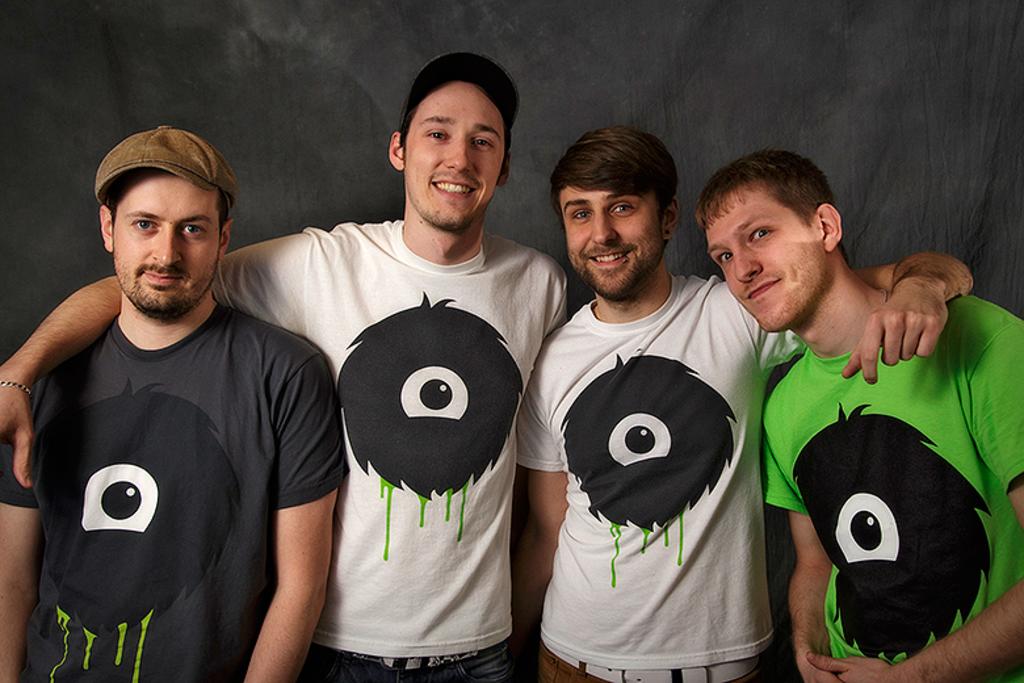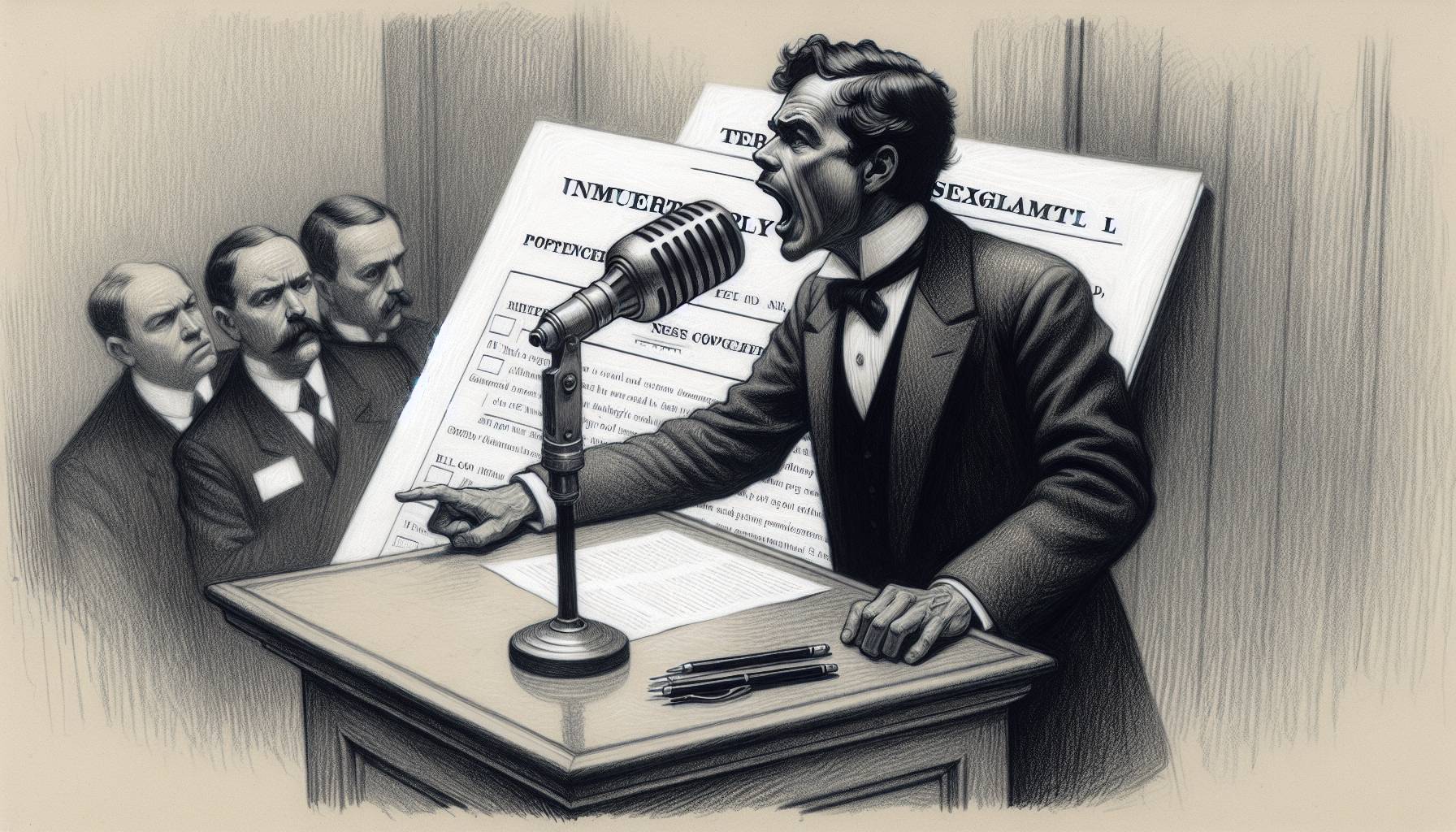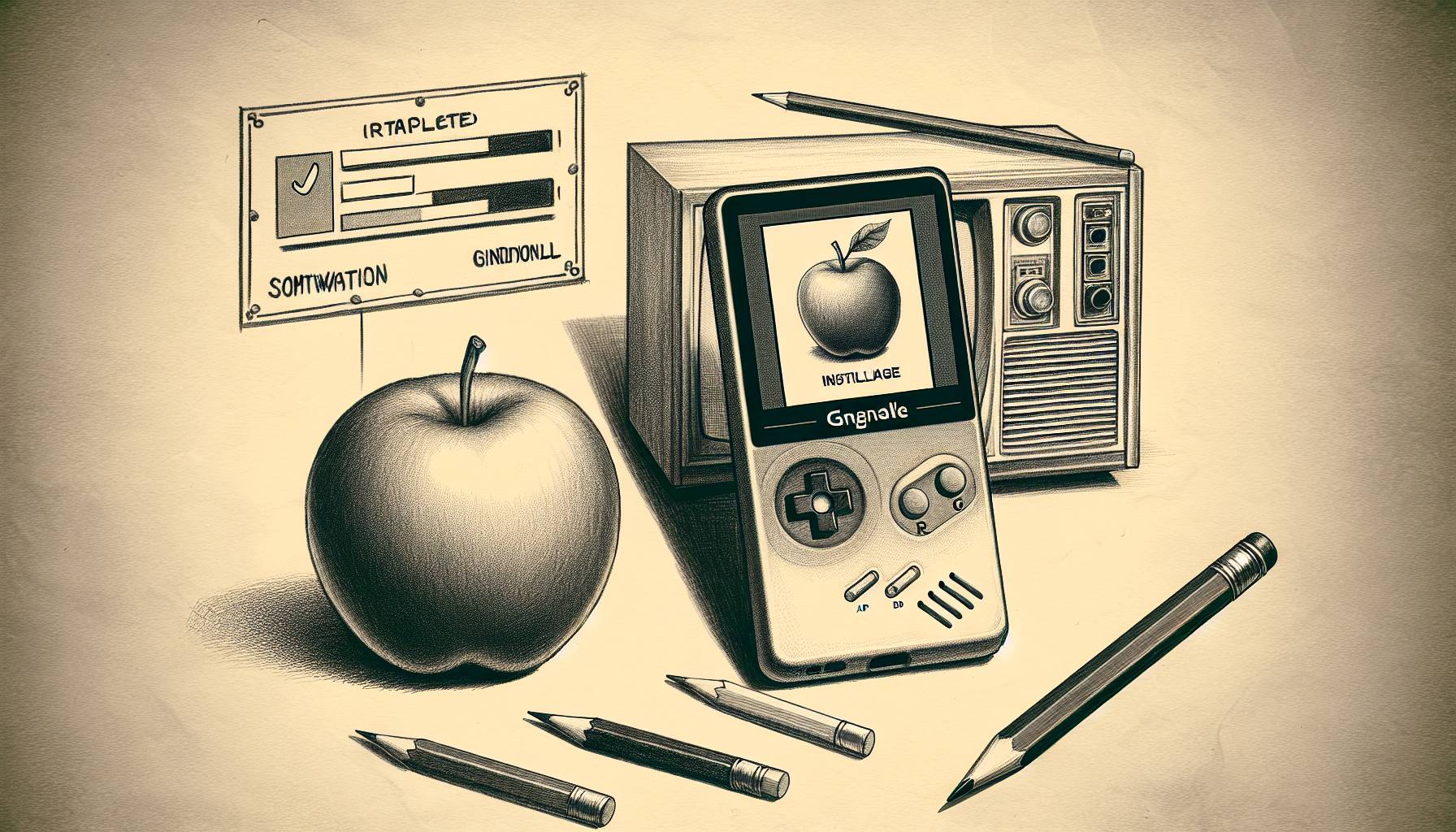[symple_box style=”boxsucces”]
Appolicious: How did Juicy Beast come to be?
[/symple_box]
Yowan Langlais: We almost all met in school, while studying Multimedia Integration in 2005. I used to do most of my school projects with Dom, the other co-founder, because we happen to work really well together. That’s how we decided to start a business right out of school. Well, almost “right out” of school, since Dom finished a year earlier and worked at Gameloft for a year before co-founding the studio with me.
We then asked another fellow student, Alex, to join us, as he was well known across the school for his impressive programming talents. He miraculously took the leap of faith and agreed to join us.
We then met our lead illustrator, JP, a couple weeks before opening the studio. He was studying traditional frame-by-frame animation in a different school, but his style was perfectly aligned with what we wanted to make. At our big surprise, he also agreed to join our inexperienced team, and we started officially working in our tiny basement office on June 1st, 2009!
[symple_box style=”boxsucces”]
Appolicious: Where does your team draw inspiration from? What fuels your studio’s tongue-in-cheek, uproarious humor?
[/symple_box]
YL: I think that’s just our default personalities. We all like to goof around, and we have a very similar sense of humor, so we don’t have to look for inspiration much. We just do what we like and it comes out like this. Actually, we can’t help it, so it’d actually be harder to change our style haha.
[symple_box style=”boxsucces”]
Appolicious: What do you tell your artists when you need “an ice cream cone wizard” or “bison-headed luchadore”?
[/symple_box]
YL: Coming back to the question above, it’s not really something we have to ask. It’s just the type of stuff that comes out of our/his head without much effort! We might have a predefined theme we want to explore (e.g. dessert and candy based villains), but the rest is easy as pie (see what I did there).
We often draw a lot of different sketches and concepts, to then pick the best ones. Everyone in the team can pitch in and suggest ideas, which is something that JP handles very well.
[symple_box style=”boxsucces”]
Appolicious: A number of your games rely on simple, easy to pick up and play mechanics to convey deeper gameplay experiences. How does your team handle making everything from a jetpacking knight action-RPG to physics defying competitive multiplayer accessible to new players while maintaining that depth?
[/symple_box]
YL: We usually start by finding an actual game mechanic like those you mentioned. Once we have something satisfying, we push it as much as possible and create as much content as it can support.
For instance, the Knightmare Tower prototype was just a rectangle jumping on an infinity of other jumping rectangles. We were having fun dashing down on these rectangles, even without any purposes, so we knew it was a good one. We splitted the core abilities in tiny pieces to create an upgrade system, then went ahead and designed a bunch of different enemies. Voilà!
It’s often hard to find a good (but simple) mechanic that can be expended for a lot of content. Some of our mechanics stretch further than others, so the end result always changes from game to game.
We’re still interested in trying a different approach by starting with a more broad and loose core mechanic. This way, we could explore more possibilities and create bigger and deeper games.
[symple_box style=”boxsucces”]
Appolicious: Canada’s had a recent boon in terms of new game developers. The government is even helping fund certain projects or offering tax breaks. What do you think it is about the game industry that appeals to Canada’s government and entertainment industry?
[/symple_box]
YL: Well I guess it’s alway a good thing to help Canadian companies export their products worldwide and bring back tons of cash from other countries haha. It’s also in the government’s interest to help smaller businesses survive and potentially grow, so they can generate more jobs, which will generate more taxes from both the businesses and the workers. It might be a pragmatic view of the whole thing, but I think it’s one of the major factor behind their investments.
[symple_box style=”boxsucces”]
Appolicious: Your study is very candid on your blog about the ups and downs you’ve faced as a team. You even broke down why Toto Temple wasn’t going to pan out. Not many game developers do this, so… why? Is it about being candid with your fans? Advice for aspiring developers?
[/symple_box]
YL: We were pretty bummed out when we first noticed that the game wasn’t going to be much of a financial success. So instead of just being pissed about it, we decided to use the experience to grow as a business (learn from our mistakes) and potentially help the rest of the industry at the same time.
Writing the article made the whole Toto Temple Disaster Deluxe experience feel less depressing. We were receiving a lot of positive comments from both fans who had no idea what went into the game, and developers who were currently doing the same mistakes. All this feedback kind of made a positive experience out of negative one, and we learned that being this transparent can be a good thing if you can afford it. I like to think it makes us appear more as normal people trying to create fun experiences, and not just as a soulless business that only thinks about financial gain.
[symple_box style=”boxsucces”]
Appolicious: Everything challenges you differently, so what would you say the most important lessons you’ve learned with each project?
[/symple_box]
YL: We’ve released a lot of different games for different markets, so we’ve learned a lot of lessons that don’t necessarily apply to everything, but I’d say that we’ve mostly grown more aware of how to market our games.
We used to make Flash games in our early days, so we never really learned to do marketing correctly, until we hit a wall with Toto Temple Deluxe. It forced us to reevaluate how we make games and it changed a LOT of things in our process. We now think about that kind of stuff before we even start prototyping, while before we would just think about it at the end of a project.
A super-duper excellent video about this specific topic is Adam Saltsman’s GDC talk, Deciding What to Make: A Greenlight Process for Commercial Indies. It came out shortly after our big failed release, so it really hit us hard (which is a good thing). “Exposure Design”, as Adam calls it, is a skill that all developers should learn and master. It’s crucial if you want to have a chance to survive in this overcrowded market!
[symple_box style=”boxsucces”]
Appolicious: You’ve primarily stuck to mobile and browser releases. What leads you to prefer mobile? Do you think you’ll ever port another project to consoles or a PC marketplace? What was it like when you first dipped your toes into those respective marketplaces?
[/symple_box]
YL: I think we naturally like to chase new things, so it would explain why we’ve fiddled with all these different markets. Mobile has been a pretty smooth transition for us, since we used to make Flash games, which are essentially mobile games on your computer (small, bite-sized, etc).
Being a small team also influences the type of project we decide to make. Smaller games are usually faster and cheaper to make, which definitely helps. Our first try at poking the console/PC market didn’t end well for us, but we went in completely ignorant of how to do it correctly. Now that we’ve learned from our mistakes (or at least some of them), we’d approach the process in a really different way. We know we want to do console/PC games again, we just don’t know when *wink*.
[symple_box style=”boxsucces”]
Appolicious: Having bounced back from the low sales of Toto Temple, what advice would you give to developers who are staring down hard choices?
[/symple_box]
YL: As long as you can find a solution that resides in the realm of what you’re willing to do to survive, do it. You never know what will work or not. We love our job so much that there’s always something we can do to help us get back on our feet. It might not always be your first choice, but as long as you learn from your mistakes, you can only go up!
[symple_box style=”boxsucces”]
Appolicious: You talk on your blog about how returning to Burrito Bison after Toto Temple was an unusual readjustment. How did you find your groove again, coming back to the series that started it all?
[/symple_box]
YL: Doing a third Burrito Bison didn’t feel like something fresh and new at first. But later on in the production phase, once the ideas for new elements started to flow, it felt just like a new game. We were facing new design problems, which should always be fun if you’re a designer. I think it’s really our perception of doing a third installment that felt less interesting at first.
We’re glad that the game’s release was a success, but we’re still hungry for truly new stuff *wink*.
[symple_box style=”boxsucces”]
Appolicious: For each team member – what is your personal favorite title out of the Juicy Beast line up?
[/symple_box]
Yowan: The lessons learned from Toto Temple Deluxe, the craziness of Burrito Bison and the gameplay of Knightmare Tower
Dom: Knightmare Tower and the development process of Silverado Apocalypse Blaster
Alex: Knightmare Tower
JP: Burrito Bison Revenge and Gentlemen Dispute













